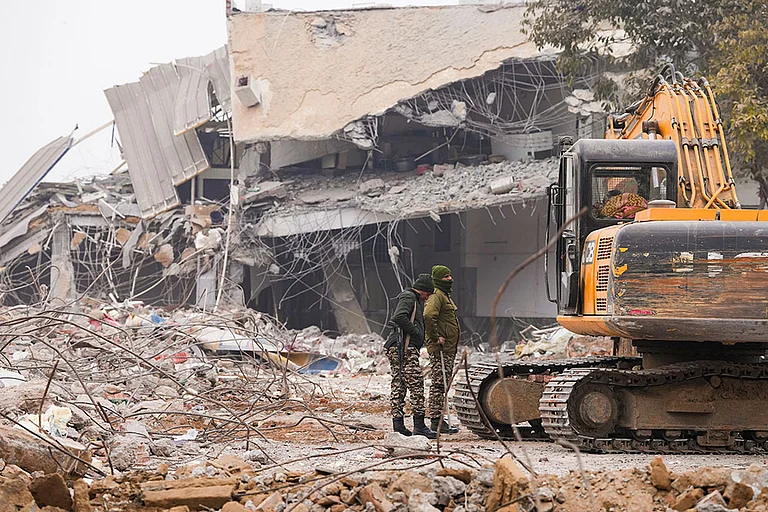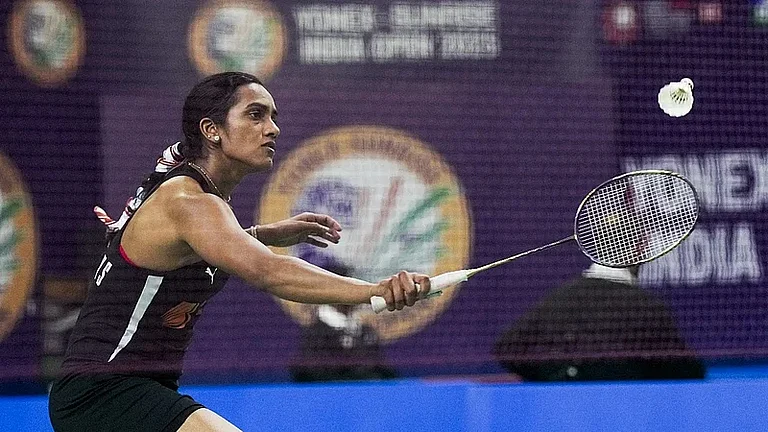Around mid-February, a prominent Hindi news channel carried a report which claimed that prominent Shia leader Kalbe Jawwad had extolled the BJP while condemning its main rival, the Samajwadi Party (SP). A day later, an independent non-profit portal, the Muslim Mirror, published a counter-report, “Battle for UP: Shias in Lucknow upset with this BJP,” rubbishing the narrative that the Shias were likely to support the BJP in the Uttar Pradesh assembly elections. The story said that the Shias and Sunnis have come together to defeat the BJP, even though in the past leaders, like Lalji Tandon and Atal Bihari Vajpayee have reached out to the Shia community. “Ban on rituals during Muharram, crackdown on illegal slaughter houses that impacted the sale of meat, police atrocities on anti-CAA protestors and now the hijab controversy have made the Shia community in Lucknow give a second thought to their support to the BJP,” wrote Muslim Mirror, underlining that recent political developments have brought the two Muslim sects closer.
This was not an isolated instance. Over the past few years, several news portals owned and run by Muslims have emerged—to narrate stories of the community and other marginalised groups from a perspective different from the majoritarian viewpoint. The pioneer among such portals was TwoCircles.net (2006), followed by the Muslim Mirror (2012), Maktoob Media (2014) and Clarion India (2013). For several years, TCN was the major voice among the Muslim media, but their numbers grew when the community felt that a section of mainstream media houses were increasingly portraying the community in poor light. The new Muslim-run portals include Millat Times (2016), The Cognate (2018), The Hindustan Gazette (2021) and Maktoob Media (2014).
One of the oldest community-driven media initiatives, however, goes way back to 1949 when Abid Ali Khan, a member of the Progressive Writers’ Association, founded Siasat Daily, an Urdu newspaper. Apart from the newspaper, the group now runs an English website siasat.com that publishes reports on Islamophobia, communalism and as well as other general news.

In 2016, Shams Tabrez Qasmi, who was a journalist with news agency IANS, formed the Millat Times. Its YouTube channel now has a subscriber base of nine lakh and increasing daily. He hails from Bihar and studied in Jamia Millia Islamia University. In a recent video, he underlined how some Muslim leaders like Azam Khan, Abdullah Azam and Imran Masood have become “showpieces” for political parties in Uttar Pradesh. Millat Times tries to “show the real issues of Muslims beyond the binary of left, right, secular or communal”.
There is a striking difference in the way these organisations cover elections as compared to mainstream media houses. The two dozen-odd Muslim men who were shot dead in UP during the anti-CAA agitation barely found a place in election speeches of secular leaders. “Even the well-meaning media is cautious about asking these questions. This silence is erasing the shared experience of oppression of an entire community,” says Meer Faisal, a young reporter with Maktoob Media.
In contrast, Muslim Mirror has a space dedicated to “Islamophobia” on its website, which gets some 20,000 visitors daily. Faisal says that most mainstream political commentators talk about Muslims being a “vote bank of secular parties” without going into the “nuances of how this is different from other caste groups or communities”. Faisal adds, “Muslims in UP are voting for survival and not for development—be it the weavers whose income has significantly dropped or the Qureshis employed in the meat-processing industry facing a hostile regime.”
Diverse Origins
Notably, these fledgling media organisations are all in English, being steered by a bunch of bright and young Muslims. The Delhi-based Maktoob Media was founded by Aslah Kayyalakkath, a postgraduate in History who had earlier worked as a communication officer at the Human Welfare Foundation. The Cognate is owned by Shaikh Zakeer Hussain who, with a degree in business administration, earlier worked with different MNCs. Hussain’s website covers news, culture and businesses related to Indian Muslims. In one of its major stories, the portal busted stereotypes peddled by some mainstream newsrooms at the time of Tablighi Jamaat controversy during the pandemic. Muslim Mirror was formed by MBA graduate Syed Zubair Ahmad as a response to a series of false terror charges against Muslim youth. “Islamophobia is not just the BJP’s preserve. I am less worried about the BJP than about other secular parties,” says Ahmad. He chose English as he felt that the Urdu media had lost the “courage to even question the local councillor”.

He says that though mainstream media may see their work as “unprofessional’ or “focused on feelings”, the Muslim media gives voice to an entire community. Maktoob Media has also covered elections in Bihar, Kerala and Tamil Nadu. In Bihar, it portrayed Asadduddin Owaisi as a competent politician and countered the argument that the AIMIM is a “communal” party or “BJP’s B-team”. It also filed reports on UAPA and sedition charges in Kerala, DMK’s new face and how Muslims can be part of it, and on Stalin emerging as a stalwart for Muslims.
The community’s disenchantment with mainstream media has a reason. “While the mainstream media used the phrase hijab row, it was actually a hijab ban. We see ourselves as an agenda-setting portal,” says Shaheen Abdullah, a reporter for Maktoob Media. These alternative media houses are also not shy of using words avoided by mainstream media, like ‘massacre’ and ‘pogrom’. “We are not the bystanders in our stories. Mainstream journalists might view us as fringe, but we have broken important stories,” says Abdullah. Journalist Zafar Afaq who frequently writes for Clarion India says that “just two years ago, it was easy to dismiss our reports as the fringe”, but no longer. “The audience is now supportive of this niche reportage and is ready to promote community media,” says Zafar, underlining that such coverage also sensitises the young Hindu audience about the concerns of Muslims.

Senior journalist and writer Mohammad Ali, a post-graduate from Columbia University who began his reporting career with TCN, believes that these portals have helped the liberal English media to approach Muslim issues differently, though with some limitations. These journalists note that while their disenchantment with the mainstream media was obvious, even some independent news portals with a bright record on human rights and communalism were not sufficient to meet the needs of the community. Significantly, several journalists have grown out of the newsrooms of community-driven media and have joined and contributed to other groups. Shaikh Zakeer Hussain of The Cognate proudly mentions that some of his reporters, like Rushda Fathima Khan, got bylines in international news portals and were invited as guests on TV debates on the hijab ban.
ALSO READ: Media And Manipur: Courage Under Fire
None of these, however, comes without intimidation. Millat Times is fighting a legal case after Facebook deleted their page in January, while The Cognate is facing defamatory charges from a mainstream news channel for terming its coverage on Tablighi Jamaat during the pandemic “hateful” and “fake”.
Changing the narrative
Ali said that these community-driven media houses have gradually enabled a radical change in the mainstream media’s perspective on Muslims. “Before TCN, the mainstream press reported on Muslims as a community, which was only concerned with its religious identity. Stories on Muslims mostly revolved around issues like haj, qabristan, personal law, fatwa and talaq,” he says. TCN started reporting on Muslims from a socio-economic perspective, talked about its backwardness and highlighted the need for education and affirmative action to alleviate their backwardness. Its reports also “highlighted the contribution of Mulisms in India’s growth, scientific development and research to show that the struggles, fears and aspirations of Muslims are as that of Hindu middle class.” It featured young women like Khushboo Mirza, who after a degree from Aligarh Muslim University joined ISRO’s Chandrayaan mission.

“TCN raised the question why Muslims have to deal with a torturous stereotypical representation when they are in mainstream in a variety of ways,” Ali says. The coverage made a “section of sensible journalists in the mainstream media sit back and think about” the state of affairs, he adds. Rabia Shireen of the Hindustan Gazette believes that while big media houses offer opportunities to report stories at a bigger level, smaller “portals are a base for new journalists”. Academic and activist Apoorvanand says these portals have done the “important job of documenting everyday attacks on Muslims and their gradual marginalisation”. Zafar also says the accusation that Muslims are speaking in an echo chamber is unfair. “We don’t write reports with the disclaimer that only Muslims should read it,” he says, noting that an informed minority is better equipped to contextualise its place in the republic.
Introspective gaze
However, these alternative media houses also face a few issues, which can perhaps be termed as teething troubles. Underlining that the editorial rigour and ground reportage of community-driven media need to be improved, Ali cautions against romanticisation of community-driven media. Moreover, these Muslims journalists are yet to occupy commanding positions in the media sector. “Muslims do well as reporters but often fail to rise to top positions in the media,” Apoorvanand says.
He also notes that while “Muslims can freely report in these spaces, the editorial filter is missing right now”. “It is mostly because the reporter is generally the editor, so the space of dissent and second opinion is often missing,” he adds. Zafar Afaq attributes “sloppy editing” to lack of resources that are necessary to “ensure well-edited copies”. This apart, such journalism has already made an important space for resistance, particularly at a time when Muslims are struggling to find their rightful space in the media.
(This appeared in the print edition as "Dial M for Media")
(Views expressed are personal)
ALSO READ
Eram Agha and Alishan Jafri are Delhi-based independent journalists






















